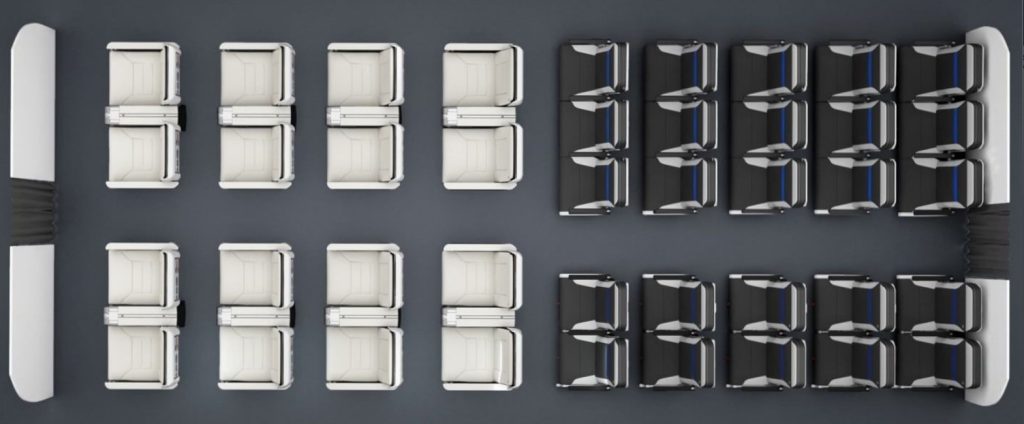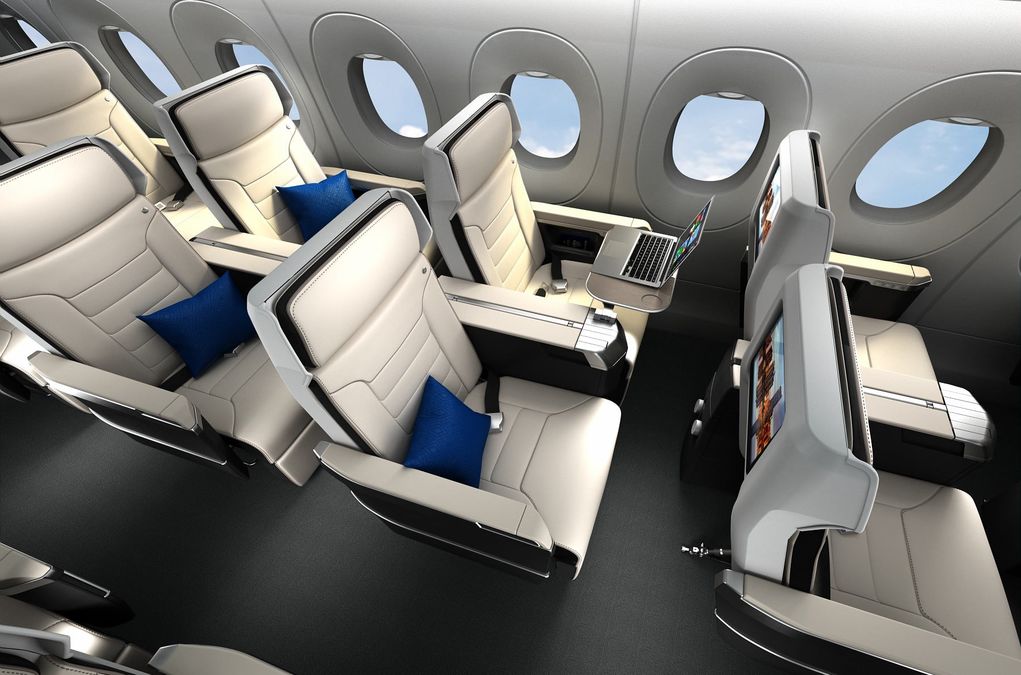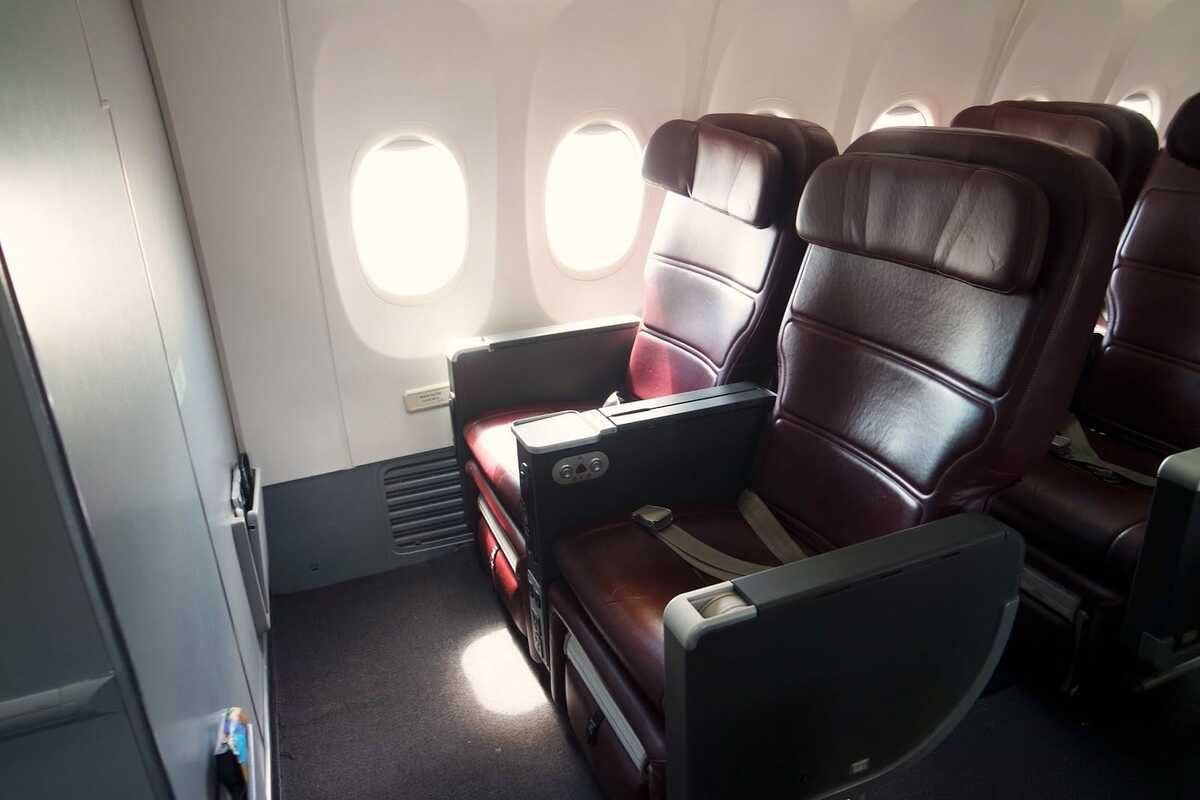Out with the old and in with the new – the anticipated new arrival is expected to improve red tail travel in Australia.
Nimble and noteworthy. Less noise, longer range and better economics are just some of the ways the new Qantas A220 is expected to improve how we travel around Australia and even on shorter international routes.
20 Airbus A220-300s are expected to become the backbone of Qantas’ regional domestic fleet, replacing the Boeing 717 from the end of 2023 and promising to change travel for the better.
Here’s what you need to know about the A220 and Qantas’ multi-billion dollar renewal of its domestic fleet.
Why the change?
Chances are if you’ve stepped on a domestic Qantas flight, you’re well-accustomed to the drone of a Boeing 717.
Qantas has placed an order for a total of 40 aircraft, including 20 A321XLR (extra long-range), with the right to purchase a further 94 aircraft over the next 10 years. These two orders come during a time when Qantas is working to phase its existing Boeing 737-800s and 717s out.
Tenders from Airbus, Boeing and Embraer saw Qantas consider core requirements surrounding safety and emissions reductions in an aim to meet its net zero target.
Popular with airline customers in the United States and Europe for its capability to fly regional routes as well as longer sectors between capital cities, the Airbus 220 boasts practical versatility in its compact frame.
Differing ranges and economics delivered by a combination of small, medium, and large jets mean Qantas will have a greater ability to ensure the right aircraft is on the appropriate route.
What does this mean for Qantas customers?
When it comes to the A220, heightened flexibility essentially translates to quality and quantity. This means Qantas customers will be able to enjoy more departures throughout the day on smaller aircraft, or extra capacity at peak times with a larger aircraft.
Qantas will have the flexibility to service most of its domestic and regional routes between the A220-100 and A220-300, with copious wiggle room for future changes to its operations.
Essentially, Qantas’ addition of the A220 to its domestic fleet will also support new regional routes – should the demand arise – which means customers will be kept at the forefront of new opportunities opened by the aircraft.
As far as the cabins are concerned, Qantas has announced exciting improvements set to enhance passenger comfort and in-flight experience.
A breakdown of the Airbus A220
The single-aisle Airbus A220 packs a promising punch. Don’t let this aircraft’s compact size fool you; a well-thought-out seating configuration and large windows make for a light and airy feel on this small, but mighty aircraft.
Coined as the world’s ‘most modern small aircraft’, the A220 combines passenger comfort with economic practicality.
An impressive 6,390km range (more than double that of the Boeing 717) could see passengers fly from Sydney to Singapore in one fell swoop. Here’s what else you can expect onboard:
- 137 seats (10 in business class and 127 in economy)
- 25 rows of 2-3 seating
- 32-inch seat pitch
- A kink in the aisle between business and economy cabins
- Seatback video screens
- USB sockets
- Larger windows of any single-aisle aircraft
- Reduced noise
- One-inch extra width room for the middle seat (19 inches)
The A220 could even give Qantas customers a reason to love the middle seat! While some airlines have opted for a seating configuration that makes all the seats the same width – instead adding half an inch to the aisle – it’s not yet known which A220 configuration Qantas has gone for.

Where will Qantas fly the A220?
You can expect to see the Airbus A220 service existing Boeing 717 and Embraer E-Jets’ regional QantasLink routes.
However, the new aircraft’s improved range gives the national carrier more options to dart between capital cities, as well as service short-range international routes to Asia and New Zealand.
Yes, a ticket on the Qantas A220 could take you from Perth to Auckland. Other options could include routes between: Brisbane and Broome and Adelaide to Cairns. In fact, the A220 could even be the end of Adelaide missing out on international Qantas departures, with much of South-East Asia in its reach.
As a result, it’s likely anyone who embarks on a future domestic Qantas flight will get a taste of the modern and deceptively spacious Airbus A220.
Will there be a business class offering?
Qantas has carved out plenty of room for business class flyers, with ten seats grouped in two-seat pairs.
With international routes on the cards, having a decent business class is important. Luckily, we can expect a business class seat on the A220 to offer a level of comfort one typically wouldn’t expect from a small aircraft – a big improvement from the Boeing 717.
While we won’t know exactly how Qantas decided to lay out the business class cabin until it publishes the official A220 seat map, passengers can expect 21-inch-wide seats (an inch wider than on the 717).
Qantas can choose between buying the standard A220 business class seat, or hand-pick a model from an Airbus-approved supplier – watch this space.

Airbus A220 v Boeing 717: A comparison
The Airbus A220 is a notable leap from the Boeing 717 in more ways than one. The change will deliver greater flexibility to service longer routes, as well as a massive reduction (20% less per seat) in fuel burn and carbon emissions compared to Qantas’ current domestic fleet.
There’s also a lot to say about the A220’s unparalleled small plane comfort, with special insulation and sound-deadening materials meaning the A220 has half the noise footprint. Even the air conditioning system has been tweaked to reduce airflow noise, making for the ideal environment to enjoy a short-haul nap.
While the A220 has more seating overall, the Boeing 717 makes it slightly easier to get a business class seat. The below table demonstrates how the new Airbus A220s will compare to Qantas’ existing 717 fleet.
| Aircraft | Airbus A220 | Boeing 717 |
|---|---|---|
| Seat capacity | 137 (10 business + 127 economy) | 110 (12 business + 98 economy) |
| Seat width (economy) | Over 18” (19” for middle seat) | 17-18″ |
| Seat width (business) | 21” | 20” |
| Range | 6,390km | 2,408km |
While the real point of difference is the A220’s more-than-double range, if you’ve ever boarded a Boeing 717 you know the grief that is loading and unloading luggage into the overhead storage.
Thankfully, the A220 boasts overhead bins that are large enough to fit one standard carry-on roller bag per passenger and swing down quite low to make for a far more pleasant experience.
When can we expect to see the A220 in Australian skies?
Qantas has decided the A220 is the ideal aircraft for the long-term renewal of its domestic single-aisle fleet, the order is in, and the planes are in production at the Airbus assembly line in Canada as we speak, but when can we expect to see them take to Australia’s skies?
We’re 18 months away from the first Flying Kangaroo A220 touching down on Australian soil. In what will be a long-awaited and highly-anticipated delivery flight, the first A220 is expected to make its way from Canada to Qantas’ Sydney jet base at the end of 2023 before launching the national carrier into a new era of domestic travel.
Conclusion
Small, but mighty. The red-tailed Airbus A220 will replace Qantas’ domestic fleet of ageing Boeing 717s, with a longer-range, unparalleled technology, state-of-the-art design and leading fuel efficiency, which places the A220 eons ahead of its American predecessor.
Being barely out of a troublesome travel-halting pandemic may seem like an interesting time to commit to 60 new aircraft, however, this sign of confidence is arguably a good sign for Qantas customers, employees, and shareholders, with the A220 now a promising symbol of the Flying Kangaroo’s long-term renewal plan.
With an impressive range promising more versatile route options, it’s fair to say we can expect to see a lot of the A220 on Australian tarmacs by the end of 2023.
The Airbus A220 comes at a time when many disgruntled Qantas customers are holding out hope for smoother flying. Amongst other things, the A220 could very well become the ultimate appeasing machine.
Do you think the Airbus A220 is a good fit for Qantas?
While you’re here: Subscribe to our newsletter for the latest tips, deals and news. It only takes a few seconds and we respect your privacy:





12+98 = 110. Not 125
Thanks for the pick up Dave, we’ve corrected this figure.
How do they format business class if there are ten seats?
Hi Scott. The Qantas A220-300 will feature ten business class seats, which will be grouped in two-seat pairs. This means two rows of 2-2, followed by a third ‘half-row’ of two seats.